Speakers
Discover below the plenary speakers and invited speakers of the ECT 25 conference.
Plenary speakers
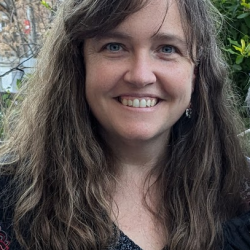
Olga Caballero
Olga Caballero (Instituto de Micro y Nanotecnología (IMN-CNM) of the Spanish Research Council (CSIC), Madrid, Spain)
Driving Innovation and Empowering Wearables: Advances in Thermoelectric Generators for Automotive and Body Heat Harvesting
Thermoelectric generators (TEGs) have garnered significant attention for their potential to convert waste heat into electrical energy, particularly in automotive and wearable technologies. This presentation will discuss recent progress in TEG materials and device architectures, emphasizing practical considerations such as material selection, device efficiency, and integration challenges. These findings contribute to a better understanding of the opportunities and limitations of thermoelectric energy harvesting in real-world conditions.
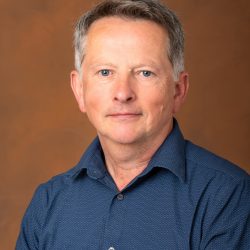
Thierry Caillat
Thierry Caillat (Jet Propulsion Laboratory (JPL), NASA, Pasadena, USA)
Radioisotope Thermoelectric Generators for US Space Missions: Past, Present, and Future
Radioisotope Thermoelectric Generators (RTGs) have played a critical role in powering some of NASA’s deep space missions over the years. This talk highlights the key technology features that have made RTGs so reliable and such a success. The talk also summarizes potential future RTG thermoelectric converter improvement options and discuss the challenges for infusing these technologies into potential future RTGs.
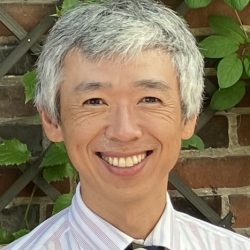
Atsushi Togo
Atsushi Togo (National Institute for Materials Science (NIMS), Tsukuba, Japan)
Computational strategies for modeling transport: electron, phonon, and machine learning.
Using first-principles calculations, machine learning, and automation, we aim to systematically calculate electron and phonon transport in a wide range of crystalline compounds. We are also working to make these tools accessible to many researchers. In this presentation, I will introduce our latest research efforts in this field.
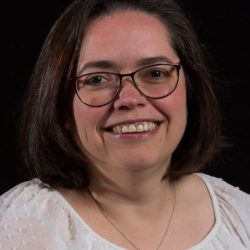
Paz Vaqueiro
Paz Vaqueiro (University of Reading, United Kingdom)
Lone pairs as a design strategy for thermoelectric materials
Heavier elements from groups 13, 14 and 15 of the periodic table exhibit stable oxidation states that are two lower (e.g. Tl+, Pb2+, Bi3+) than the expected oxidation state for their respective groups, due to the inert pair effect. This presentation will explore the impact of incorporating cations with lone pairs on the electronic and thermal transport properties of thermoelectric materials. Concepts such as emphanisis, resonant bonding and metavalent bonding will be discussed.
Invited speakers
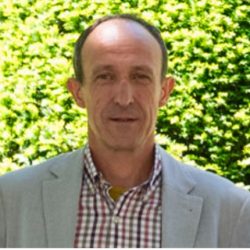
David Astrain
David Astrain (University of Navarre, Spain)
Perspective on thermoelectric applications of heat pump, cooling and geothermal energy
In this talk, different thermoelectric applications, developed by ITF from Spain, will be presented, including doble-stage heat pumps for building and thermal process, hybrid cooling systems and geothermal generators. The most important experimental results will be shown, and the critical points of these applications will be analyzed, as well as their advantages and disadvantages compared to compressor- and turbine-based technologies.
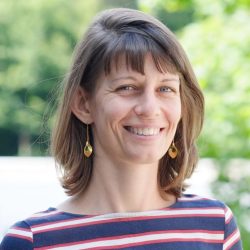
Laure Biniek
Laure Biniek (Institut Charles Sadron (ICS), Strasbourg, France)
From macromolecular engineering and doping efficiency to structural control and device engineering, the latest advances in polymer thermoelectrics
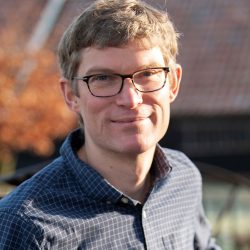
Jan-Willem G. Bos
Jan-Willem G. Bos (University of St Andrews, Scottland)
Recent developments in n-type XNiSn half-Heusler thermoelectrics using Cu dopants
Half-Heusler materials are leading contenders for thermoelectric power generation due to their favourable combination of good performance, mechanical properties, easy contacting and stability. We have explored the use of Cu as a dopant in the n-type XNiSn materials. However, beyond simple carrier doping, introduction of Cu leads to a plethora of favourable effects. These include an enhanced Seebeck effect and improved power factors due to formation of a dopant band, strong reductions of the lattice thermal conductivity and coherent layers and wetting layers at grain boundaries. During synthesis Cu promotes homogenisation of the X-site metals, Ti, Zr and Hf, overcoming kinetic barriers that lead to multiphase behavior. In-situ neutron powder diffraction has been used to obtain new insights in the formation of XNiSn materials from elemental precursors.
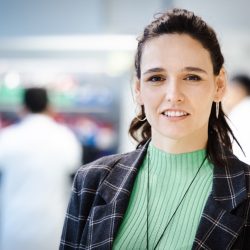
Maria Ibañez
Maria Ibañez (Institute of Science and Technology Austria, Klosterneuburg, Austria)
Optimizing Thermoelectric Materials: Balancing Performance, Cost, and Sustainability
The talk will discuss solution-based synthesis as a means not only to reduce precursor costs and energy consumption but also to enable unique material design and engineering opportunities unattainable with solid-state techniques. Beyond material development, we will cover strategies for translating these advances into devices, with a focus on 3D printing to optimize fabrication, reduce material waste, and lower processing energy and time—all while maintaining high performance.
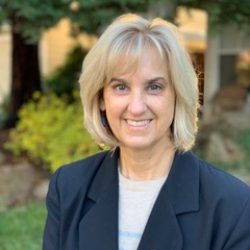
Susan Kauzlarich
Susan Kauzlarich (UC Davis, USA)
Emerging thermoelectric properties from semimetal to semiconductor
I will present the structure of a new intermetallic, Eu5+xAl3+ySb6, that crystallizes in the pseudo rock-salt structure of (Eu/Al)Sb. The thermoelectric properties are investigated as a function of composition. The rock-salt structure gives rise to high valley degeneracy and n-type conduction, resulting in a high Seebeck and low electrical resistivity. The structure is surprisingly complex and gives rise to ultra-low thermal conductivity. The evolution of the electronics with composition will be presented.
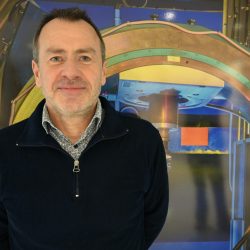
Michael Marek Koza
Michael Marek Koza (Institut Laue Langevin (ILL), Grenoble, France)
Inelastic Neutron Scattering, an Experimental Tool for Understanding Phonons and Diffusion Processes in Thermoelectric Materials
The optimisation of thermoelectric materials (TEM) is associated with the reduction of their lattice thermal conductivity. Phonons as the main carriers of thermal energy in TEMs are of central interest in this optimisation process because a targeted design of phonons, e.g. through the material composition and structuration, leads directly to reduced thermal conductivity and because dynamic interactions, such as phonon-phonon, electron-phonon and solid-state diffusion, leave their mark on the phonon properties. A thorough insight into phonon dispersion, spectral density and lifetime as well as mass transport is therefore important for understanding of the processes that mitigate heat transport. Inelastic neutron scattering (INS) is a powerful experimental tool to successfully approach this task. We will discuss essential INS techniques to explore different phonon aspects in detail and present examples from recent studies on promising thermoelectric compounds.
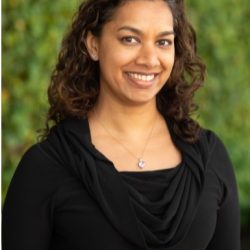
Sanya LeBlanc
Saniya LeBlanc (George Washington University, USA)
Leveraging Additive Manufacturing to Re-envision Thermoelectric Systems
Traditional thermoelectric device manufacturing uses steps that lead to material waste and performance limitations and offer little flexibility in designing the geometry of thermoelectric modules. Additive manufacturing offers the potential to structure thermoelectric materials and devices at multiple length scales, thus improving both intrinsic properties, overall system performance, and application integration. This talk will explore progress in additive manufacturing of thermoelectric materials, including the link between multi-scale materials, manufacturing, and system-level considerations for thermoelectric generators.
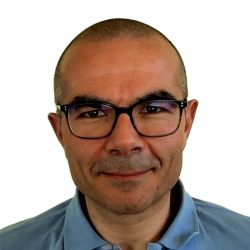
Gian-Marco Rignanese
Gian-Marco Rignanese (Université Catholique de Louvain, Belgique)
Combining the Power of High-Throughput Ab Initio Calculations and Machine Learning towards Materials Informatics
In this talk, I will address the influence of high-throughput ab initio methods on materials discovery via online databases. While investigating complex properties remains challenging, the integration of machine learning has emerged as a viable solution. The talk will cover recent advancements in materials informatics, focusing on the use of the OPTIMADE API and the MODNet framework for predicting materials properties.
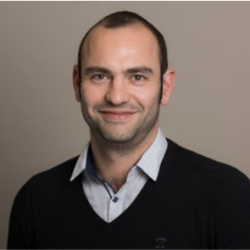
Dimitri Taïnoff
Dimitri Taïnoff (Institut Néel – Start-up Moïz, Grenoble, France)
Thermoelectricity as an energy source for the powering of industrial IoT sensors: use cases and perspectives
As industry faces 4.0 revolution and the issue of decarbonization, the need for affordable and easy industrial measurements has never been more crucial. In this context, MOÏZ start-up offers a range of self powered Industrial IoT nodes thank to patented thermal energy harvesting architecture. In this talk, we will first address our vision of thermoelectric applications for autonomous sensors. Then, we will review some concrete industrial applications that are being addressed within MOIZ start-up, from process monitoring to railway maintenance. To conclude, we will give some perspectives on our future development in collaboration with academic research.
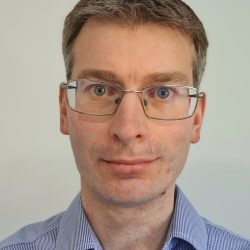
Richard Tuley
Richard Tuley (European Thermodynamics, United Kingdom)
Advancing Thermoelectrics to Market: An Industrial Perspective
Thermoelectrics have seen major scientific advances, but commercial success remains limited, with most products still based on decades-old technology. This talk examines both the opportunities and challenges in the field, including the often-overlooked difficulties of transitioning from laboratory research to market deployment. While thermoelectric generators may hold greater potential for rapid growth than cooling applications, they also face more substantial barriers to entry.
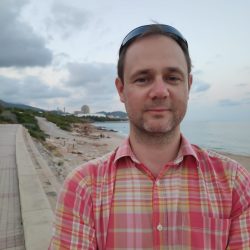
Bartlomiej Wiendlocha
Bartlomiej Wiendlocha (AGH University of Krakow, Pologne)
Resonant Levels in Thermoelectrics: What They Are and How They Work in Metals and Semiconductors
In my presentation, I will provide a general overview of resonant levels (RLs) in thermoelectric materials, an active area of research aimed at optimizing their performance. I will focus on the modifications of the electronic structure, conductivity, and charge carrier scattering induced by RLs to explain how to detect them, how they function, and what the controversies or misunderstandings were that have led to claims that RLs cannot improve thermoelectric properties. Additionally, I will highlight the similarities and differences in how RLs operate in metallic alloys and semiconducting thermoelectrics. While RLs can enhance thermoelectric properties in both cases, they do so in distinctly different ways, leading to opposite signs of thermopower despite a similar positioning of RLs relative to the Fermi level. Finally, I will discuss how RLs interact with other strategies for improving thermoelectric performance, such as multiple doping and band convergence.
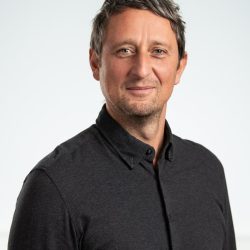
Pawel Ziolkowski
Pawel Ziolkowski (Deutsches Zentrum für Luft- und Raumfahrt (DLR, German Aerospace Center, Cologne, Germany)
Thermoelectric Measurement Methods: From Transport Properties to Generator Characterization
Thermoelectric materials play a crucial role in energy conversion by directly transforming heat into electric energy. Accurate measurement of their transport properties—such as electrical conductivity, Seebeck coefficient, and thermal conductivity—is essential for assessing their performance. This talk provides an overview of key thermoelectric measurement methods, from fundamental transport property evaluation to the characterization of complete thermoelectric generators. We will discuss experimental techniques, challenges in measurement accuracy, and their impact on material and device optimization. By combining different measurement methods at both the material and module levels, we gain deeper insights into performance-limiting factors and optimization strategies, ultimately supporting the development of more efficient thermoelectric generators.
ETS PhD Award Winner
Winner selected by the review committee:
Dr. Aryan Sankhla, Justus-Liebig-University Giessen and DLR, Germany
Will present an invited communication on
‘Interplay between composition, electronic band structure and electronic transport properties in n-type Mg2X (X: Si, Sn) materials’
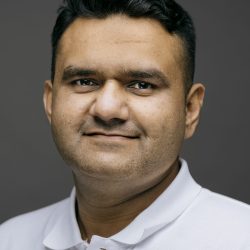

Titre
texte

Titre
texte
ETS PhD Award Winner
The winners of the ETS PhD Award 2025 will be announced at the conference. Join us to find out who will be awarded!



Titre
texte

Titre
texte
